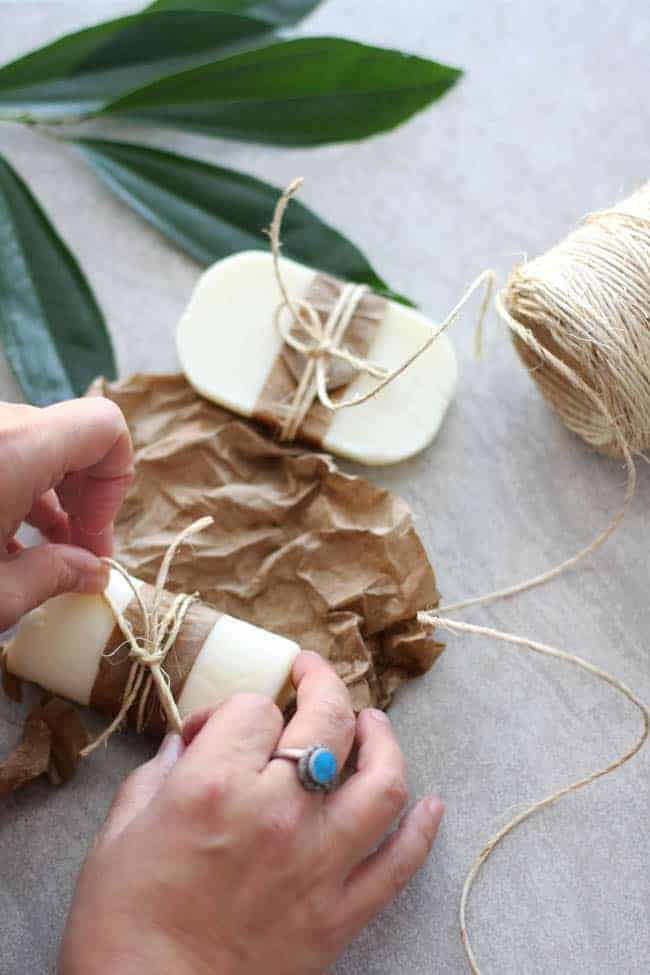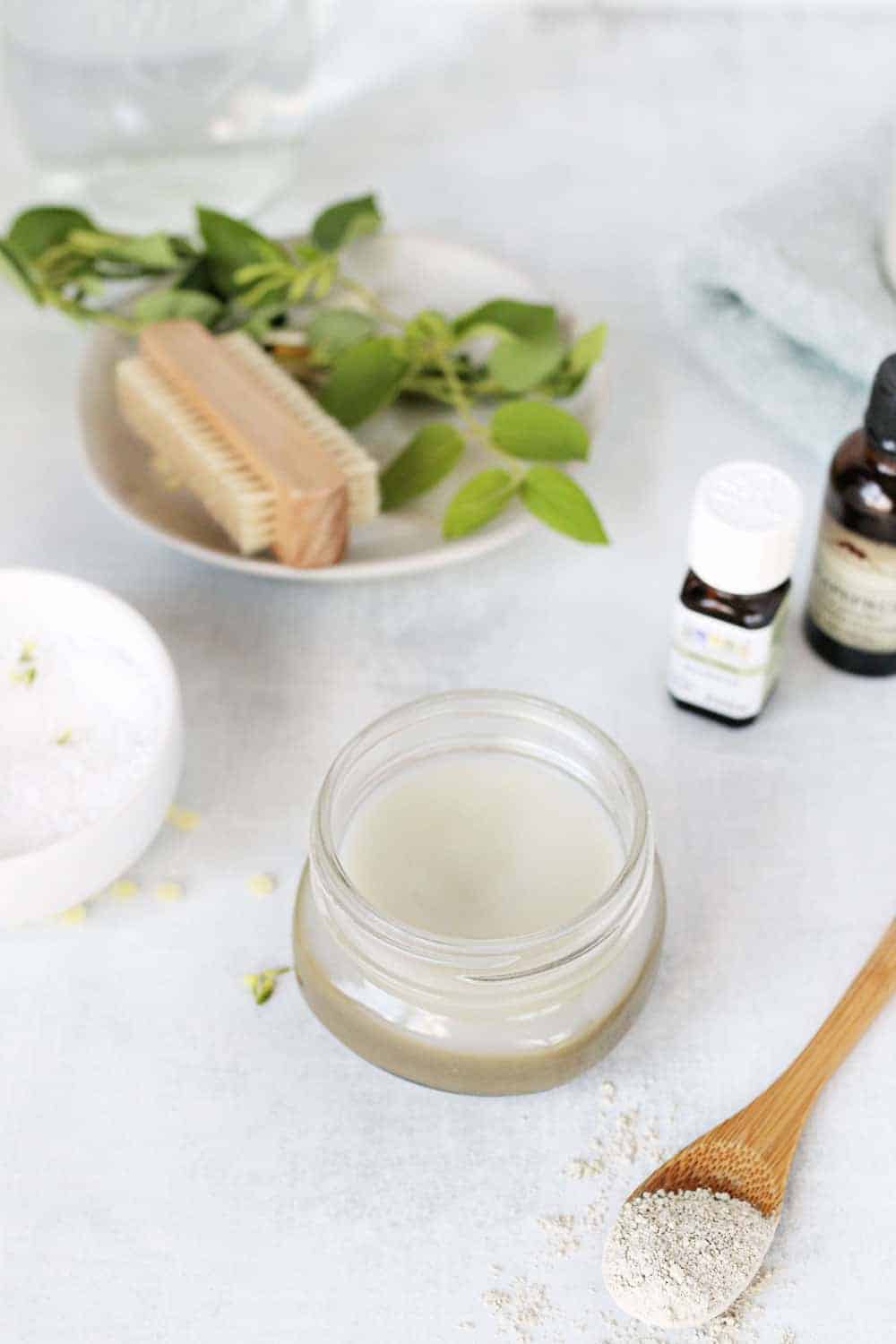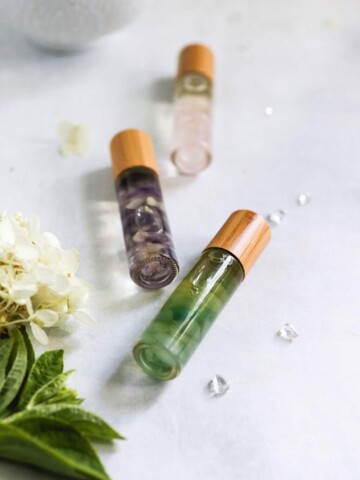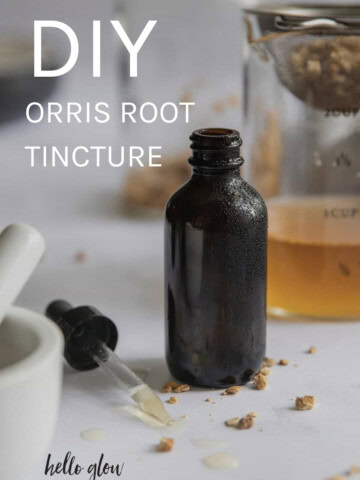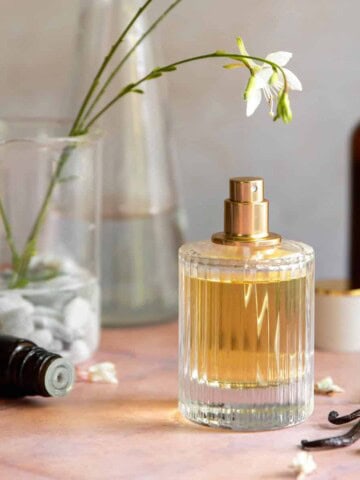Your deodorant is one of the most important products to go green for. The underarms are very sensitive areas and easily absorb the chemicals from deodorants. The good news? There are plenty of options! Here, we’re breaking down our favorite homemade deodorant recipes and recommending natural deodorant picks that we’ve tried and loved.
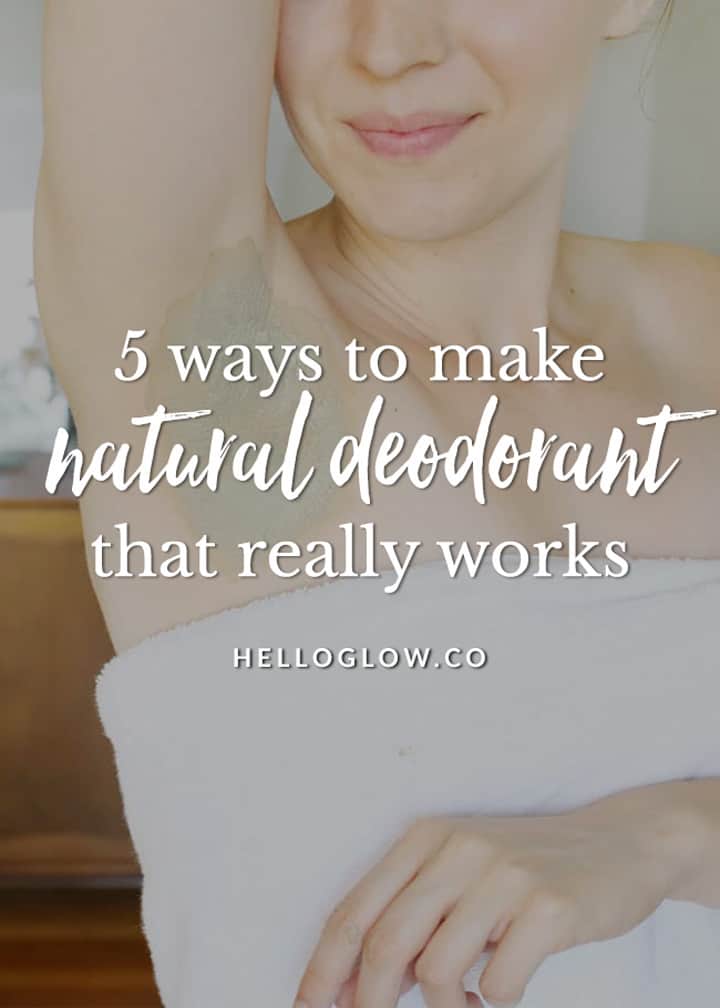
Deodorants can be tricky when it comes to making the switch from conventional. If you’re used to using an antiperspirant, natural deodorants can leave you feeling damp, uncomfortable, and self-conscious.
Natural deodorants have come a long way, but making the switch can still be rough. We’re sharing our favorite natural deodorants that you can buy below, but don’t be scared to make your own.
Jump to:
- Why Switch To Natural Deodorant
- 1. Baking Soda + Coconut Oil Deodorant
- 2. Essential Oil DIY Deodorant Spray
- 3. Homemade Deodorant Bar
- 4. Homemade Clay Deodorant
- 5. Baking Soda-Free Shea Deodorant
- How To Switch To Natural Deodorant
- Natural Deodorant Troubleshooting
- Not Ready to DIY? Our Natural Deodorant Picks
- Homemade Deodorant Recipes
- References
Why Switch To Natural Deodorant
I’m sure you have heard all the reasons we should ditch traditional antiperspirants and start using natural deodorants instead.
- Aluminum, the most common ingredient in antiperspirants, has been linked to serious illnesses, including breast cancer [source].
- Parabens are also common in deodorants and antiperspirants and have been linked to possibly increasing the risk of breast cancer by disrupting the body’s natural estrogen [source].
- Silica (a carcinogen), talc (a carcinogen), triclosan (a classified pesticide), propylene glycol (petroleum-based), and steareth-n are other chemicals that can irritate skin and pose possible health concerns.
And while it’s not like we’re eating it, deodorant is applied close to the lymph nodes under your arms, and there is a certain amount of absorption into the bloodstream [source]. So, it makes good sense to try changing to natural brands that do not contain toxic products.
Ready to make the switch? Here are 5 of our favorite homemade deodorant recipes.
1. Baking Soda + Coconut Oil Deodorant

This simple mix of coconut oil, baking soda, and essential oils helped me make the transition to DIY deodorant.
Pros:
- The recipe is easy, which makes it perfect for natural deodorant newbies.
- I do the sniff test every so often—because I’m still paranoid—and have yet to smell anything really appalling. As a big coconut fan, I love the tropical smell of coconut oil DIY deodorant combined with my favorite essential oils.
- My underarms feel better than ever. Mix up coconut oil toothpaste while you're DIYing and your pits and lips will be softer than ever!
Cons:
- Have to substitute arrowroot powder if you don't want to use baking soda.
- The consistency is more like a whipped butter so you have to apply it with your fingers and wait a minute or two for it to sink in before dressing.
- By nighttime, the deodorant has usually worn off but so far, nothing is too stinky.
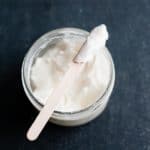
2. Essential Oil DIY Deodorant Spray
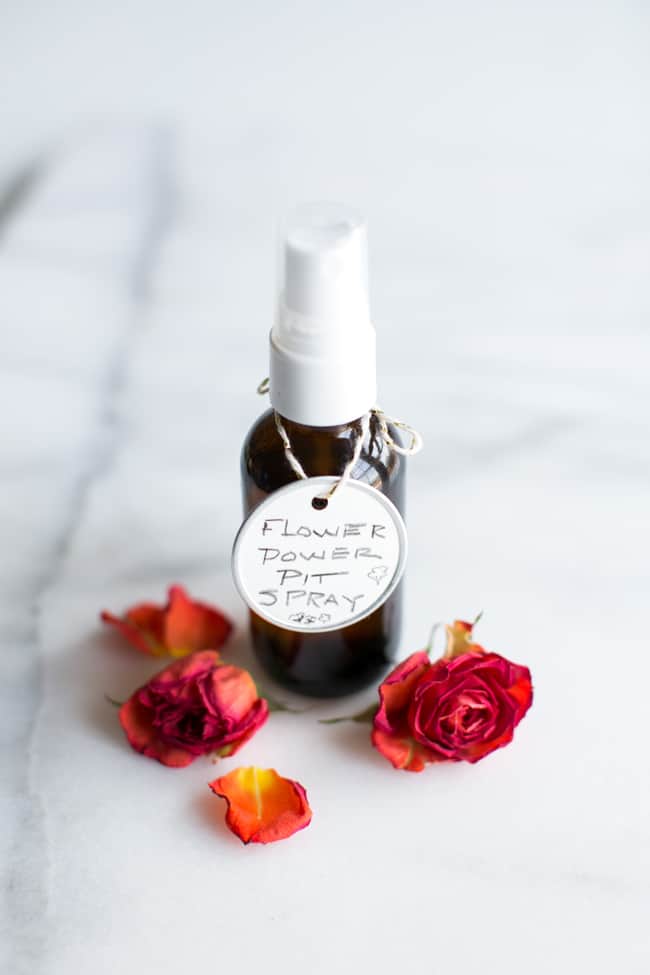
I was unsure about a deodorant spray, but it ended up being one of my favorite recipes. The vodka dries things out a bit and helps slow down sweating.
Pros:
- The essential oil combination smells so good that you can skip perfume!
- And if floral scents aren’t your thing, you can customize the smell. Try the woodsy EO version or whatever essential oil combination that works for you.
- It's super easy to apply (just spritz it on) which makes reapplication a breeze. And you can carry it with you for on-the-go emergencies.
Cons:
- The vodka might sting a tiny bit if applied right out of the shower after shaving.
- The scent won’t last all day, so you'll have to apply it again after exercising or heavy exertion.
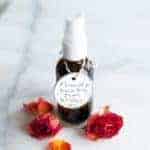
3. Homemade Deodorant Bar
Making a deodorant bar is just like making a lotion bar, with a few extra ingredients.
Pros:
- Slathering deodorant onto my pits with my fingers can feel weird so I love that this deodorant bar works much like a deodorant stick—it's so much easier to apply.
- Pour it directly into an empty deodorant container and it goes on just like regular deodorant.
- The recipe uses cornstarch and baking soda to absorb odors so you can leave out the baking soda if you find it irritating.
Cons:
- The beeswax helps the bar hold its shape and gives the deodorant staying power, but it can feel heavy on the skin.
- The recipe is more complicated to make.

4. Homemade Clay Deodorant
This DIY clay deodorant is a gift from the summer gods. You’ll stay dry and BO-free all day.
Pros:
- Coconut oil and tea tree essential oil are naturally antibacterial, so you stay smelling fresh for hours.
- Shea butter and beeswax are super moisturizing and help soften razor bumps and irritation.
- This recipe uses clay to absorb moisture for extra drying power, not baking soda.
Cons:
- Since it’s oil-based, a little goes a long way. Apply only a pea-sized amount to each underarm or it might feel a little greasy.
- You have to apply it with your fingers and let it soak in before putting on a shirt.
Ingredients
- 2 tablespoon beeswax
- 3 tablespoon coconut oil
- 1 tablespoon shea butter
- 2 tablespoon bentonite clay
- 2 tablespoon arrowroot powder
- 20 drops tea tree essential oil
- 3 oz jar
Instructions
1. Melt the beeswax, coconut oil, and shea butter in a small saucepan over low heat.
2. Once fully melted, remove it from the heat and add bentonite clay and tea tree oil.
3. Whisk to combine. Pour the mixture into a jar and set it aside to cool completely.
5. Baking Soda-Free Shea Deodorant
Wondering what diatomaceous earth (DE) is? Well, it’s made of the naturally occurring fossilized remains of a type of algae. They are ground up into a soft, fine white powder that has a ton of uses around the home and the garden.
Pros:
- Shea butter and coconut oil nourish your underarms and give your pit paste some staying power (yes, even in 90° weather).
- These two ingredients make the best body butter, so you can turn your deodorant into a whipped concoction that easily absorbs into the skin.
- DE is perfect for deodorant because it is chemical-free, eliminates odors, and is almost perfectly pH neutral, so it won’t make your skin too alkaline or acidic.
Cons:
- DE can be hard to find.
- Yep, you have to appy it with your fingers. But you could switch out the shea butter for cocoa butter for a more solid balm.
Ingredients
- 4 tablespoon shea butter
- 4 tablespoon coconut oil
- ¼ cup arrowroot powder
- ¼ cup food-grade diatomaceous earth
- 24 drops essential oil
Instructions
1. Melt shea butter and coconut oil together in a heat-safe bowl.
2. Combine arrowroot powder and diatomaceous earth in another large bowl. Add melted oils and essential oils and stir.
3. Let mixture cool til it’s almost solid, then whip with either a hand mixer or emulsion blender until the mixture is fluffy. Transfer to a jar.
How To Switch To Natural Deodorant
There’s no getting around it; switching to a natural deodorant is quite an adjustment. No one wants sweat stains—or body odor.
I definitely had anxiety about going au naturale. It’s normal.
Natural deodorants typically contain something to absorb moisture—usually baking soda, cornstarch, or arrowroot powder—but they don’t prevent sweat from occurring in the first place like the aluminum in traditional antiperspirants.
You’ll have to get used to sweating again, but in my experience, it’s far less and not as stinky as I expected.
Natural Deodorant Troubleshooting
Switching to a new skincare product can sometimes leave you with unexplained irritation. Here are a few ways to troubleshoot:
You’re sweating more.
When you make the switch to natural deodorant, there’s a good chance your sweat glands will kick into overdrive for a while. As you sweat more, your underarms will need extra TLC.
Get your underarms summer-ready by regularly exfoliating and switching to a body lotion with 0.5 to 1% salicylic acid.
Your underarms itch.
It’s not uncommon for your pits to itch like crazy during this adjustment phase.
Detox your pits: Help detox your underarms with a bentonite clay mask. The clay helps draw chemicals from the skin, so your armpits can normalize more quickly. We’ve shared a few more transition tips here.
Exfoliate on the regular: Again, exfoliation and dry brushing are your friends. Exfoliating regularly helps remove dry skin, cleanse the underarms, and circulate lymph so toxins don’t get trapped in your pits.
You can also use a sugar scrub (simply combine 1 part white sugar with 1 part olive oil in a small bowl) and gently scrub your underarms twice a week to keep them clean and prevent razor burn.
You get a rash.
Some people have negative reactions to homemade deodorant ingredients, especially baking soda. The alkalinity of baking soda can throw off your skin’s pH levels, causing rashes and irritation.
Balance your pH: If that’s the case for you, swipe your pits with apple cider vinegar or use a pH-balancing toner before applying your deodorant.
Nix baking soda: You could also switch to a deodorant recipe without baking soda instead (see recipe below).
Avoid razor burn: Follow our tips for avoiding razor burn rash and try shaving your underarms at night instead of in the morning.
You smell not so fresh.
Add layers: You may not be applying enough deodorant. I’ve found it works best to layer it on. And if you’re out in the heat or exercising, you’ll need to reapply.
Add more scent: Also, most homemade deodorants rely on essential oils for scent. You can increase the scent by adding more drops to the solution (not directly on your skin).
Our recipes call for 6 drops per ounce (making a 1% dilution), but you can increase to 12 drops per ounce of carrier oil for a 2% dilution if you don’t have sensitive skin.
You can also use oils with stronger scents, like citrus, jasmine, or ylang ylang. Avoid oils that can cause skin irritation, like cinnamon, clove, and lemongrass.
ACV rescue: If all else fails and your armpits start smelling a little—uh—ripe, try raw apple cider vinegar. Thanks to an acidic pH and probiotics, it can help correct imbalances and kill the bacteria that call your armpits home.
It can also help get rid of keratosis pilaris (those pesky little bumps on the back of the arms), so apply it liberally to both underarms and upper arms for skin-smoothing benefits.
Combine 1 part water and 1 part ACV in a small bowl. Dip a cotton ball in the solution, swipe it on, and let it dry.
Your pits look dark.
Dark underarms are super common—thanks to genetics, irritation, and frequent shaving. But that doesn’t mean you’re stuck with them.
Lemon lightening: Lemons make a great (and cheap) natural lightening agent. And when lemon juice is combined with hydrogen peroxide and baking soda, it helps remove hyperpigmentation and dry skin.
Scrub 'em: Put ½ cup of baking soda in a small bowl. Add ⅛ cup of hydrogen peroxide and the juice from ½ a lemon, then mix to make a thick paste.
Apply it to your underarms and rub gently. Let it sit for an additional 2 to 3 minutes, then rinse off.
Not Ready to DIY? Our Natural Deodorant Picks
Yes, there are natural deodorants on the market that will have you feeling pretty darn dry even after a workout or time spent outside on a hot day, with minimal or no irritation!
We asked our contributors what natural deodorants they use—so you can know that the products below are tried-and-true favorites.
1. Earth Science Tea Tree & Lavender Deodorant // Because tea tree essential oil kills bacteria, it’s great for keeping odor at bay.
2. Kopari Aluminum-Free Deodorant Original // Is there anything coconut oil can’t do? Our favorite beauty ingredient is used in this deodorant to soothe and lightly scent the skin.
3. Humble Essential Lavender + Holy Basil // Lindsey and I are both fans of this long-lasting 5-ingredient organic deodorant. I hate having to reapply throughout the day because I don’t want to get oil stains on my clothes, and I never have to with this one.
4. Jason Purifying Tea Tree Natural Deodorant // If you’re looking for an option that’s readily available in stores, Jason is one that works!
5. Leaves of Trees Eucalyptus Mint Deodorant // Our founding editor, Stephanie, recommends Leaves of Trees, which uses baking soda to deodorize and kaolin clay to absorb moisture.
6. Soapwalla Citrus Deodorant Cream // Soapwalla deodorant has reached cult status, and it’s easy to see why—it really works, and more than a few of us at Hello Glow swear by it.
7. Freedom Frankincense Peach Natural Deodorant // If you’re a sucker for fun scents, you’ll adore Freedom. It also tends to last longer than many other natural deodorant options.
8. Purelygreat Cream Deodorant // If you don’t want any scent at all, go for this unscented, EWG-verified cream deodorant from Purelygreat. Their patchouli, lavender, citrus, charcoal, and floral versions also made the EWG cut—if you’d rather have one with a refreshing scent.
9. Native Lavender and Rose Deodorant // This deodorant smells like summer, and we love that it contains probiotics to balance your skin’s microbiome to prevent odor.
10. Schmidt’s Rose + Vanilla Deodorant // Another natural deodorant that will last you all day long comes in several yummy scents.
Homemade Deodorant Recipes
Equipment
- Double boiler
- Hand mixer or emulsion blender
- 4-ounce jar
Materials
- 4 tablespoons shea butter
- 4 tablespoons coconut oil
- ¼ cup arrowroot powder
- ¼ cup food-grade diatomaceous earth
- 24 drops essential oil (for a 1% dilution)
Instructions
- Combine shea butter and coconut oil in a heat-safe bowl. Heat a couple of inches of water over low heat in a small saucepan or double boiler. Place the bowl on top to melt the oils.
- Combine arrowroot powder and diatomaceous earth in another large bowl.
- Pour the melted shea butter and coconut oil into the bowl with the arrowroot and DE. Add in the essential oils and stir to combine.
- Place the bowl into the fridge to cool. When it’s almost all the way solid, take it out and whip with either a hand mixer or emulsion blender. Keep going until the mixture is fluffy. Make sure nothing is stuck to the bottom of the bowl.
- Transfer to a jar with a lid and keep in a cool, dry spot.
- Apply a small amount to your underarms with your fingers.
References
References
Igbokwe IO, et al. Aluminium toxicosis: a review of toxic actions and effects. Interdiscip Toxicol. 2019.
Hager E, et al. Minireview: parabens exposure and breast cancer. Int J Environ Res Public Health. 2022.
Pineau A, et al. If exposure to aluminium in antiperspirants presents health risks, its content should be reduced. J Trace Elem Med Biol. 2013.
This post was medically reviewed by Dr. Jennifer Haley, a board-certified dermatologist with extensive experience in medical, cosmetic, and surgical dermatology. Learn more about Hello Glow’s medical reviewers here. As always, this is not personal medical advice, and we recommend that you talk with your doctor.
107
